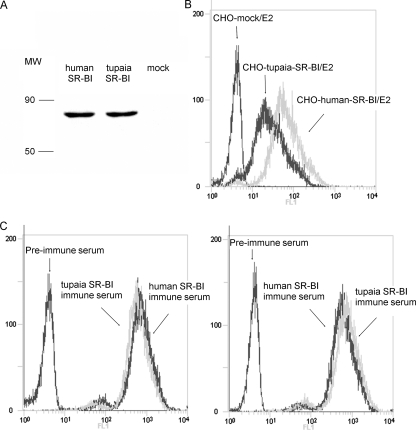FIG. 3.
HCV E2 binds tupaia SR-BI. (A) CHO cells were infected with lentiviruses containing human or tupaia SR-BI sequences or mock lentivirus. Three days later, SR-BI expression was identified by immunoblotting with an anti-SR-BI MAb. MW, molecular weight (in thousands). (B) SR-BI- or mock-transduced CHO cells were incubated with the E2 extract, and E2 binding was assayed by flow cytometry using anti-E2 polyclonal antibodies. The experiment was repeated at least three times, and one representative result is shown. (C) CHO cells described in the legend to panel A were incubated with anti-SR-BI polyclonal serum collected from mouse that received DNA immunization with human or tupaia SR-BI expression plasmid or with preimmune control serum and analyzed for cell surface SR-BI expression by flow cytometry. In panels B and C, the values on the y axis indicate counts, and those on the x axis E2 or SR-BI expression, respectively.

